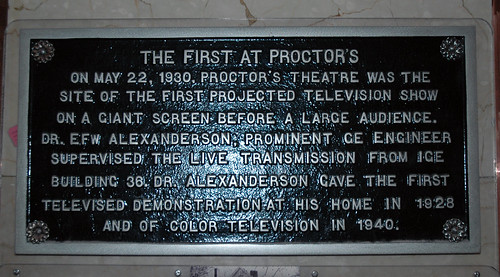 While we’re on the topic, a little more about Ernst F.W. Alexanderson, who today is primarily remembered for his early role in the development of television. In fact, his home on Adams Road in the GE Realty Plot was the site of the first home reception of television, in 1928. But the focus on television is at the expense of his pioneering work in radio, which revolutionized the world in the early 20th century.
While we’re on the topic, a little more about Ernst F.W. Alexanderson, who today is primarily remembered for his early role in the development of television. In fact, his home on Adams Road in the GE Realty Plot was the site of the first home reception of television, in 1928. But the focus on television is at the expense of his pioneering work in radio, which revolutionized the world in the early 20th century.
Trained as an electrical and mechanical engineer in his home country of Sweden, Alexanderson did post graduate study at the Technical University in Berlin, where he read Charles Steinmetz and determined that he wanted to work with the electrical genius. He arrived in Schenectady in 1902 and enrolled in the General Electric engineering course. He became a generator designer and was the one called on when radio pioneer Reginald Fessenden needed a high-frequency alternator, which he believed would allow the long-distance transmission of radio. It did, resulting in the first radio program, featuring voice and violin, on Christmas Eve, 1906. Alexanderson continued to improve radio, including creating the tuning device that was used forever after, and making broadcasts over longer and longer distances possible. By 1911, the Alexanderson Alternator (as it was known) made reliable trans-Atlantic radio communications possible.
He also improved the electric motors used in transportation, including ship motors and electric railroads. In 1924, he sent the first facsimile (fax) message across the ocean. He served as the Chief Engineer of the Radio Corporation of America, a sort of spin-off of GE that was designed to break British dominance over the radio industry in the U.S. Over the course of his career, he was awarded 322 patents.
But all this is somewhat overshadowed by his experimental work in television. Using a mechanical spinning disc system for creating and transmitting images, he sent a signal to an inch-and-a-half screen in his home in January, 1928. In 1930, he made the first major public demonstration of television, presented at Proctor’s Theater. And it is for these accomplishments he is most remembered.
Dr. Alexanderson lived until 1975, and is buried in Vale Cemetery.

Leave a Reply